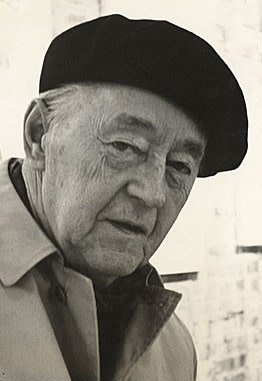John Von Wicht
American, born Germany, 1888–1970
-
Wounded and partially paralyzed in the trenches during World War I, von Wicht spent several years recovering, doing book design and illustration work, and looking at art. It was during this recuperation that he discovered Mondrian and Malevich. In 1923, with inflation devastating the German economy, he immigrated to the United States. In New York, his early training served him well. He worked for two years with a lithography company, then joined a firm making stained glass and mosaics. He learned to use symbols rather than naturalistic motifs, and explored both geometry and dense color in abstract paintings such as the Untitled gouache of about 1938, and in murals for radio station WNYC and the New York World's Fair.Von Wicht had his first solo show, of mural designs, at the Architect's Building in 1936. It was followed, in 1939, by an exhibition of his paintings at Theodor A. Kohn Gallery. The show at Kohn was well received by the New York press, and the following year he exhibited at the Whitney Museum of American Art. This exposure cemented von Wicht's reputation as an abstract painter. Throughout the 1940s, 1950s, and 1960s, he exhibited frequently in solo and group exhibitions in New York and around the country. He was invited to join the American Abstract Artists and the Federation of Modern Painters and Sculptors.
During World War II, von Wicht served as captain of a supply barge ferrying food to army transport ships in New York harbor; after the war he continued to command a supply scow. Harbor themes began to appear in his abstractions, and during the 1950s his sensuously colored geometric abstractions gave way to loose, expressionistic forms. In 1954 von Wicht received the first of twelve annual residencies at the MacDowell Colony in New Hampshire. The spacious studio and contact with other artists at the MacDowell Colony had an important impact on his work. In his exhibition at Passedoit Gallery that year, he exhibited paintings with nautical motifs in which the Cubist device of interlocking and overlapping planes was paramount. But von Wicht also began relating his work to music created by the composers he had met at MacDowell. Although his work was well received from the time of his first exhibition, critics attributed the expanded sense of space, brilliant color, and vigorous handling of paint surfaces in his new work to the experience of living away from the city. By the time he died, in 1970, von Wicht had received international acclaim.
Courtesy Smithsonian American Art Museum


